Chance of a lifetime
Gerhard Behrens |
| Sometimes, lots of hard work can really pay off. If you read every night, you will become a good reader: you learn to read any word and you understand what you read. If you shoot hoops, work on dribbling, and practice teamwork, you can become a good basketball player. |
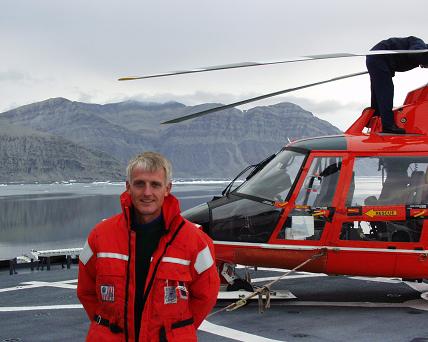
Getting the chance of a lifetime. |
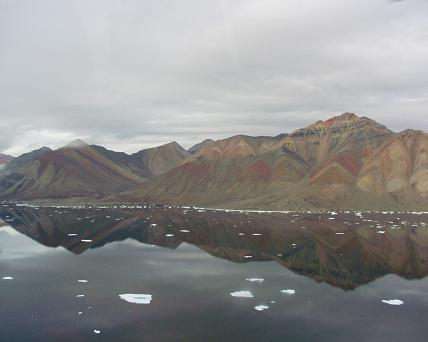
The rugged mountains of Ellesmere Island reflected in the calm waters of Kennedy Channel. |
But sometimes, something great happens…just because. You don’t deserve it, you didn’t earn it, you just get lucky and the chance of a lifetime stares you in the face. |
| This whole trip is one of those times. Cruising these Arctic waters with the world’s leading scientists and a first rate Coast Guard crew is a chance of a lifetime. This morning, my luck took one more turn for the better. I was able to ride in a helicopter to help scout out mooring sites and clam sites on Ellesmere Island. |
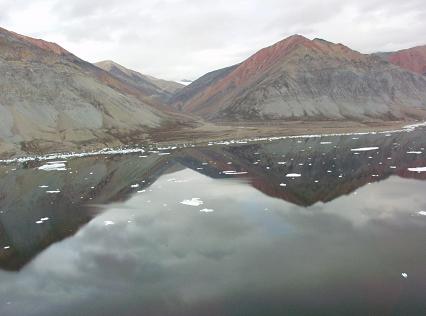
The mountains and river valleys are barren, but beautiful. |
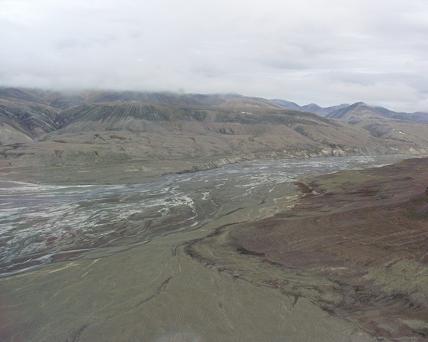
This broad river valley was a lunch spot for 4 muskoxen. |
Everything that happened is a great memory. We sat in the helo for close to 10 minutes while the pilots and ground crew checked and rechecked the helo: engines, blades, computers, pressure, fuel tanks, radar…check, check, check, check, check, and recheck. I always wondered why it took so long for the helo to lift off. Now I was glad for each check and I didn’t care how long it took before we began! |
| Up in the air, I was thrilled with the view of our ship and the Kennedy Channel. For the last 17 days, I was part of a ship that dropped equipment into the water and hauled up samples or data. Now, the ship became part of the water, and the water was part of a big channel that connected the Arctic Ocean and Baffin Bay and the North Atlantic Ocean. The helo had given me a new set of eyes on our mission. |
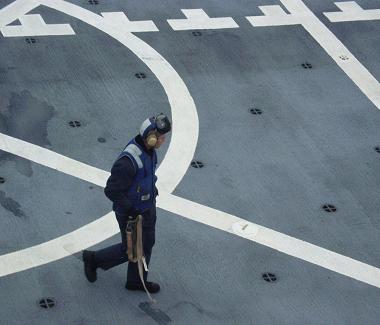
A member of tie-down crew checks the helo deck for safety. |
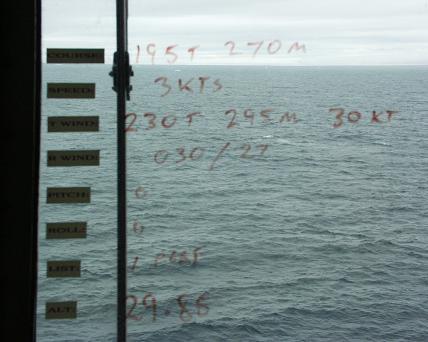
Officers in the flight tower record flight conditions right on the window. |
I was amazed at the smooth and agile flight of the helo. We took sharp, but graceful turns. We dropped quickly and easily from 500 feet to 75 feet above a gravel beach. The helo allowed us to look hard for good places to put in a mooring and find clams. We also enjoyed the views of beautiful cliffs and the desolate river valleys of rugged Ellesmere Island. A small herd of 4 muskoxen reminded us that there is life among all the rock. |
| We landed on the ship and I was thankful for the skilled pilots, Greg Matyas and Damon Williams. But there is a huge team that puts a helo up and lands it: mechanics who keep it running, seamen who put fuel in, firemen who stand watch, more seamen who push the helo to its deck and handle its tie-downs, safety technicians who provide a weather forecast, and the officers who work in the flight control room. |
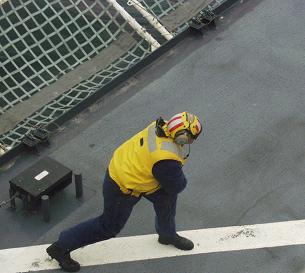
Landing Signal Officer (LSO) guides the helo and gives commands on the helo deck. |
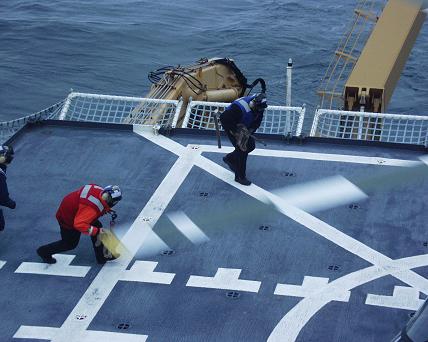
The tie-down crew enters to secure the helo. |
Maybe the luckiest thing about this flight was the lesson I learned, again, about the importance of teamwork. |
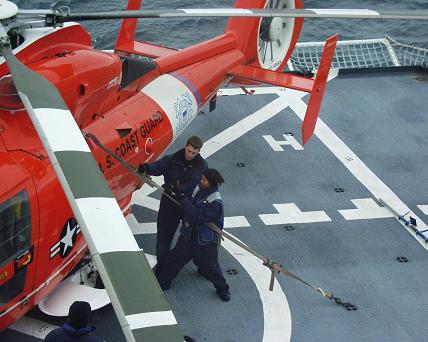
Securing the helo to the deck. |
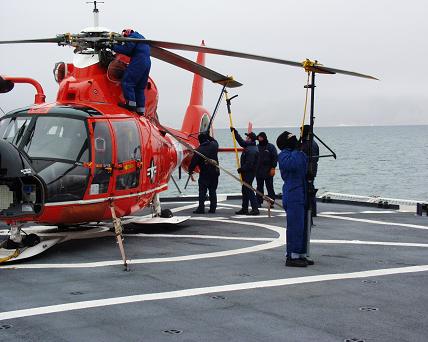
Preparing helo to enter the hangar. Mechanics, Technicians, and Pilots help out. |
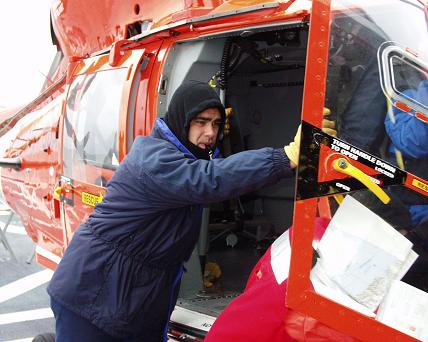
A team must push the helo in and out of the hangar. |
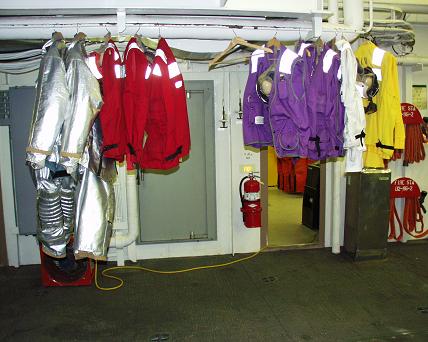
Support crew clothing: Silver fire suits; red for fire team; purple for fueling team; yellow for the LSO; Missing are the blue vests for the tie-down and pushing team (Helo Traversing Detail). |
